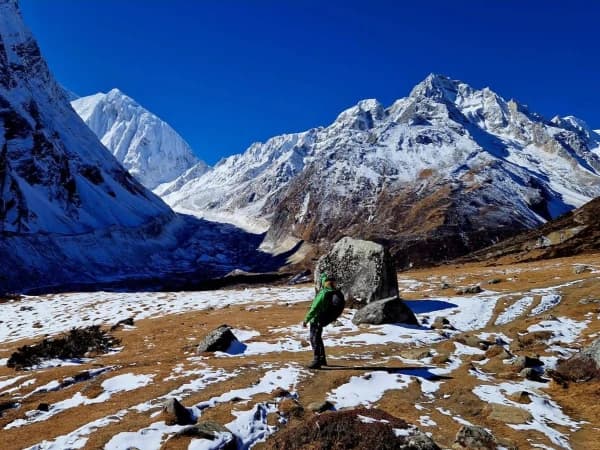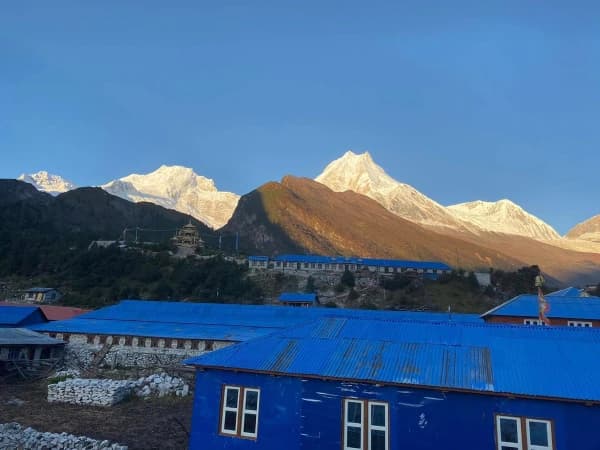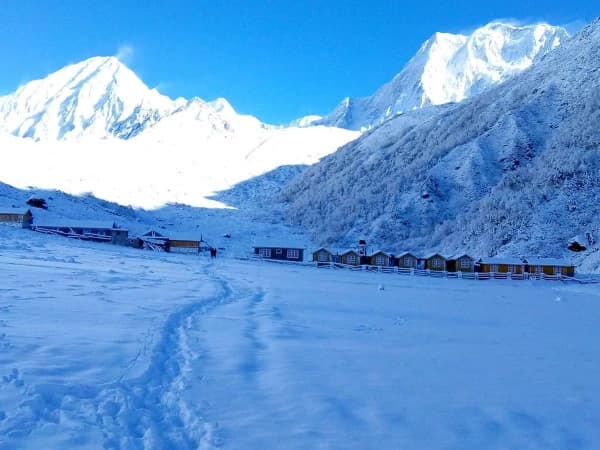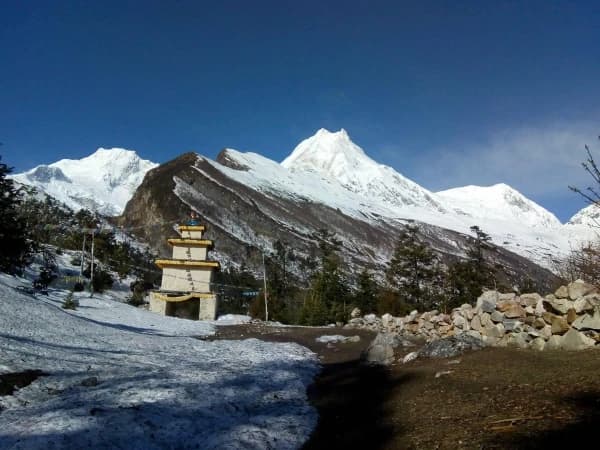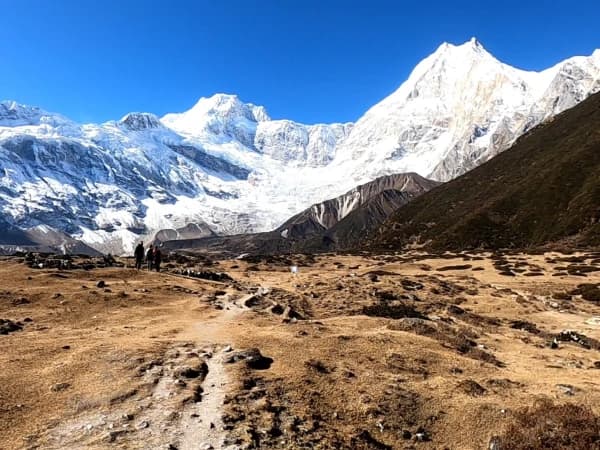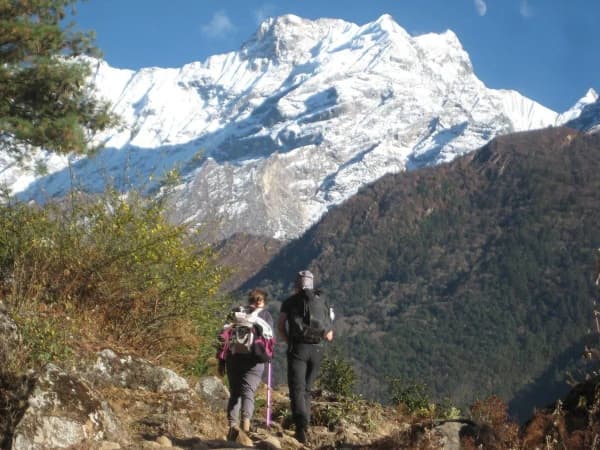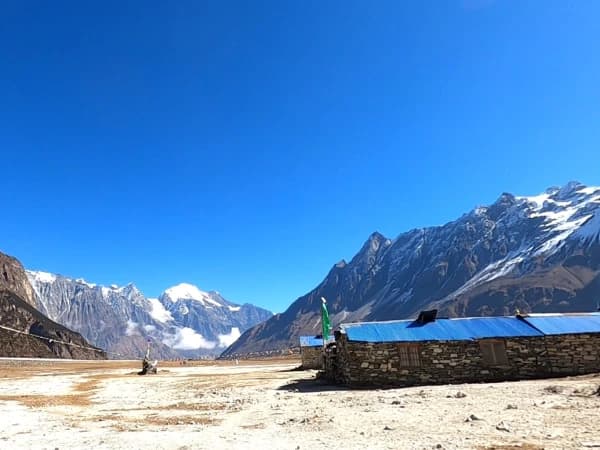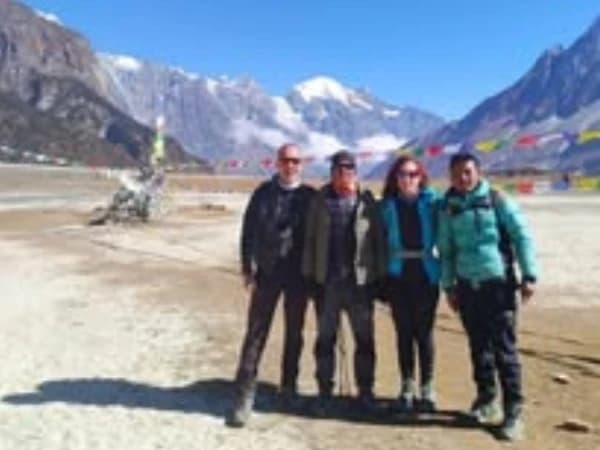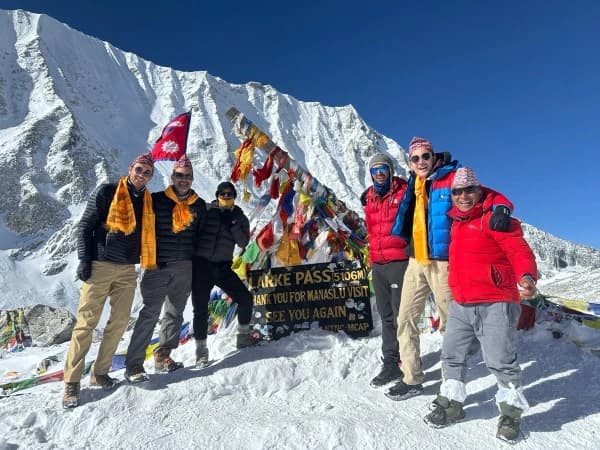The Manaslu Circuit trek is a one-in-a-lifetime experience and is often considered a hidden gem, especially compared to the more popular Annapurna Circuit trek. A little on the more challenging side, this trek offers a range of different experiences, whether it is terrain change (from subtropical to alpine climates), quaint villages with ancient Tibetan Buddhist monasteries and traditions, or the exhilarating ascent to the Manaslu Base Camp and Larke La Pass (5160m). As adventurous as the trek is, it is equally spiritual, with Manaslu standing for ‘mountain of the spirit’. It also has a rich history as the trail was previously part of the famed salt trading route between Tibet and Nepal, along the Budi Gandaki River. While expeditions to summit Manaslu started as early as the 1950s, with the first successful summit being from a Japanese expedition in 1956, the area was only opened for trekkers in the 1990s, making this a relatively unexplored region.
A challenging trek, this is perfect for those who may have already done popular or more accessible treks in Nepal, like the Annapurna Circuit trek or the Langtang Valley trek. The Manaslu Circuit trek is known for being an adventure in itself and for its breathtaking mountain vistas as you walk in the foothills of peaks like Manaslu, Himalchuli, and Himlung Himal. The Manaslu trek takes you to the Manaslu Base Camp (4460m) and then to the Larke La pass (5160m), passing by panoramic views of snow-capped mountains during the journey. With the remoteness of the Manaslu Circuit trek, much of the natural landscape is untouched, with verdant rolling hills, clear rivers and waterfalls, and unique species of flora. It is also the habitat of the world-famous snow leopard and red panda, along with various species of birds (for birdwatchers out there!).
With a special permit needed to enter the Manaslu Conservation Area, a charming Tibetan Buddhist way of life, unique monasteries, and quaint settlements have been preserved, leading to a spiritually enriching trek. In fact, there is either a monastery or a stupa at almost every stop in the journey starting from XXX. In Shyala, you will find the Pungyen Gompa (‘gompa’ stands for ‘monastery’), surrounded by prayer flags, where monks can be heard chanting during morning prayers and are open to giving tours of the facilities. Another iconic monastery along the route is Ribung Gompa, beautifully set against the backdrop of majestic mountains. The monasteries are at their full glory during major Buddhist festivals like Lhosar (Tibetan New Year), which generally falls between February to March.
Highlights
- Trek to the base camp of the 8th-tallest peak in the world, Manaslu (8163m).
- Cross the Larke La Pass at 5160 meters with breathtaking views of Manaslu and the surrounding snowy mountainscape and peaks like Himalchuli and Himlung Himal.
- Walk through the Manaslu Conservation Area, home to 39 mammals and 201 bird species, including the elusive snow leopard, red panda, and musk deer.
- Experience the uniqueness of Tibetan Buddhist culture and villages as you retrace ancient trading routes between Tibet and Nepal.
- Visit the ancient monasteries like Pungyen and Ribung Gompa to experience the day in the life of Tibetan Buddhist monks.
- Walk through the diverse landscapes and communities Nepal offers, starting from subtropical Soti Khola with Gurung and Chettri households to the alpine terrain of the Himalayas with Sherpa villages.
- Explore cultural heritage sites in Kathmandu and visit UNESCO World Heritage Sites like Swayambhu and Boudha Stupa, Pashupatinath temple, Kathmandu, Patan, and Bhaktapur Durbar Squares.
What is it like trekking the Manaslu Circuit?
This Manaslu Circuit trek is designed to make sure you have an epic adventure in the mountains. A remote and restricted destination, it offers many thrills of trekking and is relatively unperturbed as compared to other more popular trekking destinations.
Starting from Soti Khola, you are immediately surrounded by all that nature has to offer, from waterfalls, rivers, rolling hills, and green forests. From then on, you follow the trail towards the mountains as they peak through hills and valleys along the way.
One of its highlights, Larke La Pass, is considered to be one of the longest mountain passes accessible to people in the Himalayas. From the journey towards Larke La Pass, you are at the foothills of the Himalayas with close-up views of numerous mountain peaks like Manaslu (8163m), (Annapurna II (7937m), Himal Chuli (7893m) Annapurna IV (7525m), Nemjung (7140m), Gyaji Kang (7074m), and Kanguru (6981m) to name a few. With how rugged the terrain through Larke La Pass is, it is a great option for trekkers who are looking for an adventure and a challenge. While it is considered to be of moderate difficulty, you are continually adapting your body to high altitudes and rocky terrain throughout the trek.
Who is the Manaslu Circuit Trek suitable for?
The Manaslu Circuit Trek is ideal for those who are seeking a little adventure in the mountains. It is considered to be a moderate to difficult trek based on your physical fitness levels, as it takes you through snowscapes and a mountain pass. While you do not need to be extremely fit for this trek, it is best to have some fitness training to prepare for it. You do not need prior trekking experience but you do need to be moderately fit since the terrain can be rough and snowy with long hours of walking at higher altitudes. You will have had some strength-building with the days leading up to Manaslu Base Camp and Larke La Pass, however, it is recommended to do some stamina-building exercises and strength training for this trek so you can be fit enough to enjoy it.
We welcome trekkers of any age and ability during this trek, whether it is for a solo trek or as a group. A porter and a guide will be with you at all times for a smooth journey through the mountains. This trek is ideal for those who want to challenge themselves and immerse themselves in the remote wilderness and mountain landscapes of the Himalayas while still experiencing the hospitable communities and indigenous culture that Nepal has to offer.
Preparation before the Manaslu Circuit Trek
If you are ready to commit to this trek and want to train for it, it would be highly advisable to begin training for it for at least a few months before you embark on your journey. You can simulate the trekking experience by going on regular hikes with your backpack. You can then gradually increase the duration and altitude of your hikes (and if you are extra ambitious or if your physical health allows, you can always load your backpack with heavier objects) to simulate the terrain conditions of the trek. If you want to train at the gym, you can also opt to do some stair climbing exercises, strength training, and build stamina by doing cardio. Exercises like running, cycling, and swimming are also great for gradually building muscles in your body. While you do not need to be in peak physical condition for this trek, as long as you are keeping yourself physically active and strong on a regular basis, you will be able to complete the Manaslu Circuit!
